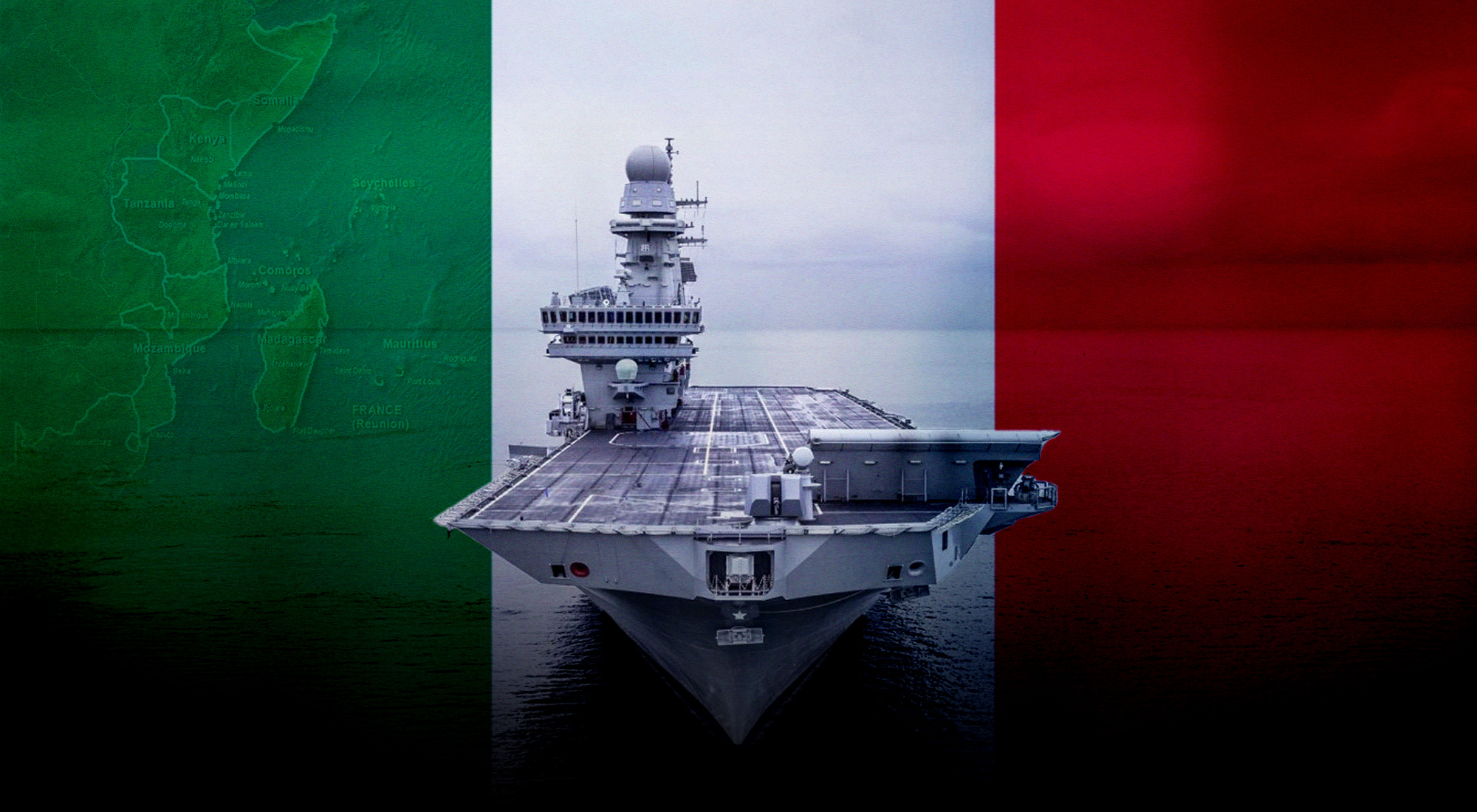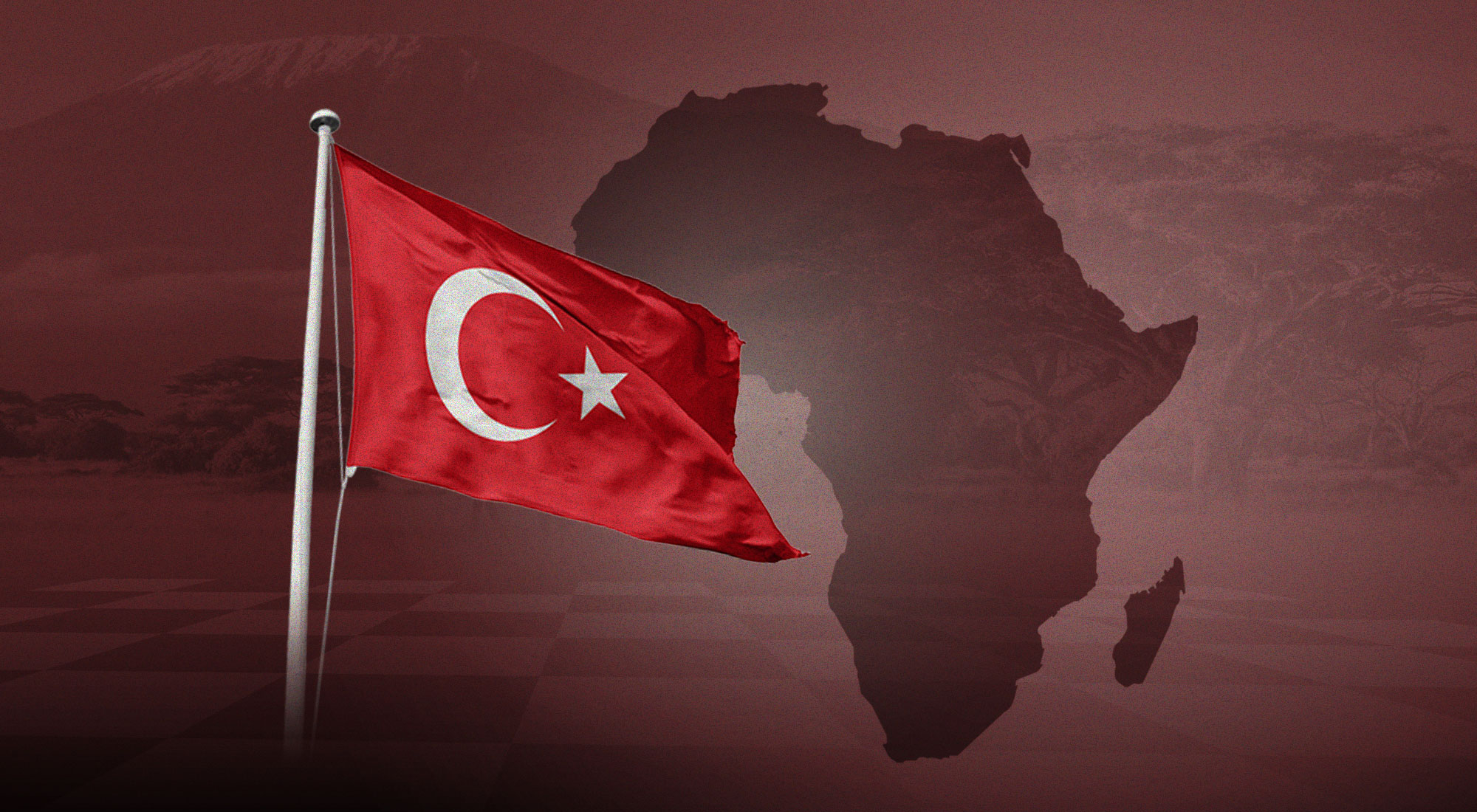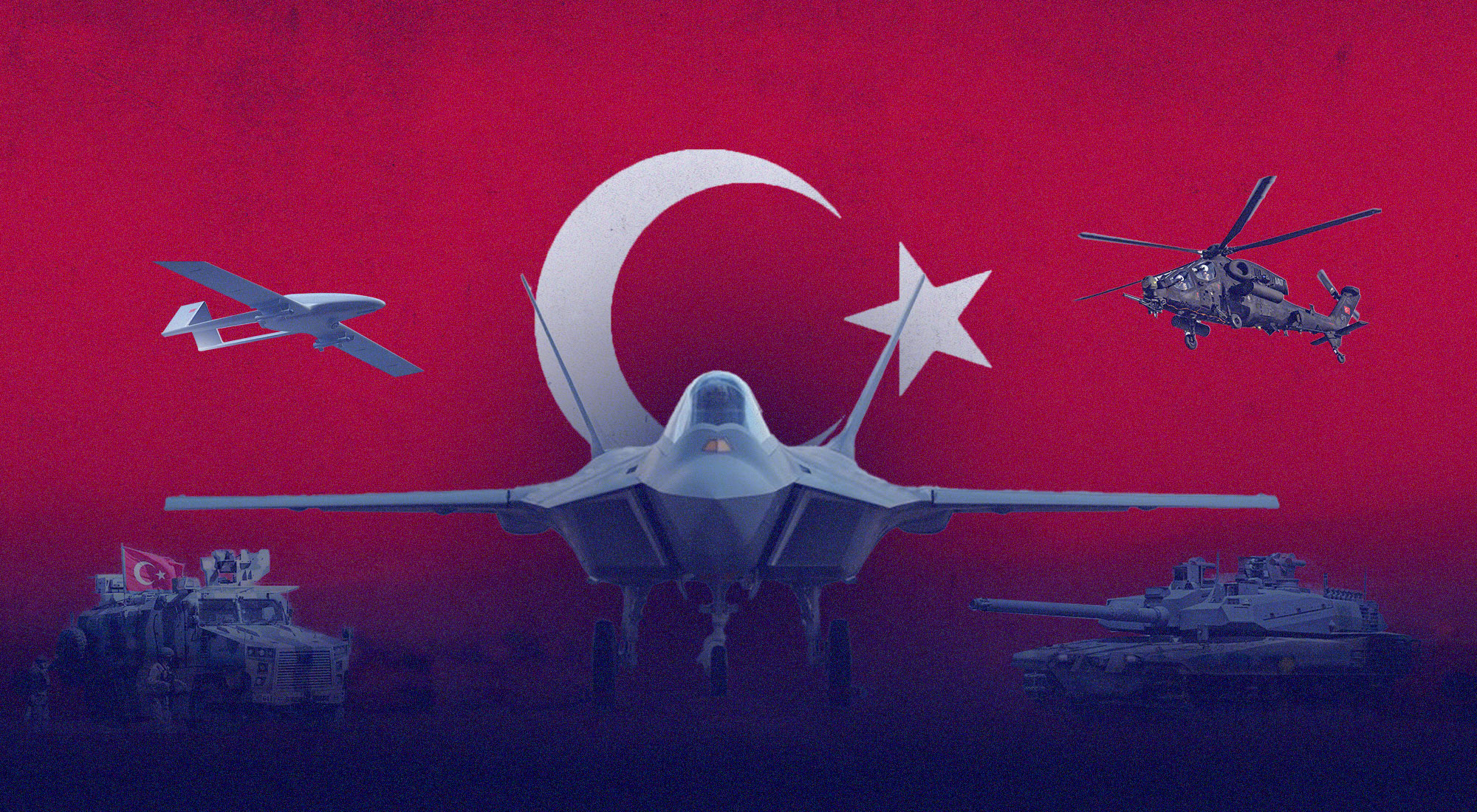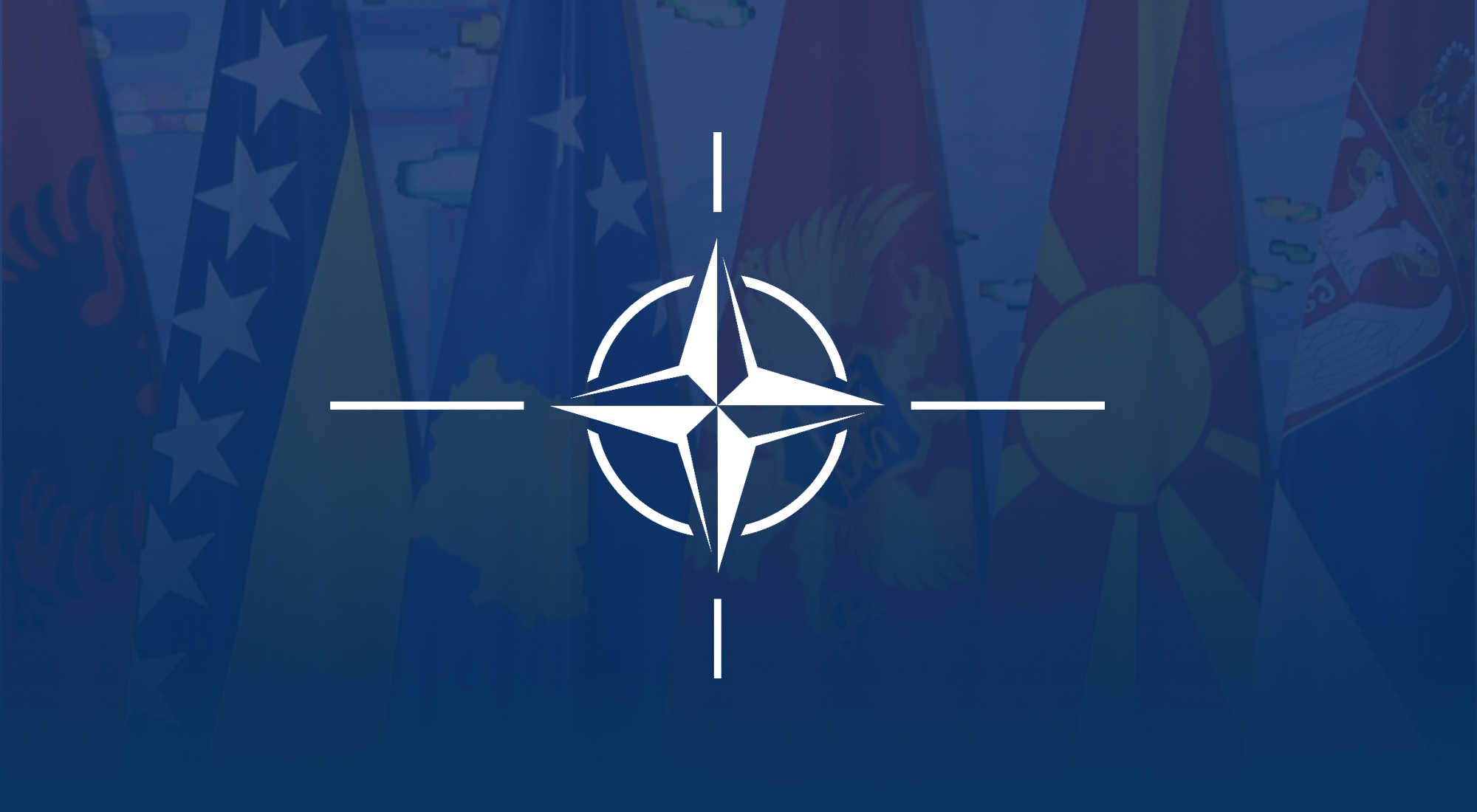Once confined mainly to the Euro-Mediterranean, Italy’s strategic horizon is expanding eastward. Over the past five years, Rome has quietly but steadily intensified its naval activism across the western Indian Ocean and the wider Indo-Pacific, signaling a shift with profound geopolitical implications. From sustained naval deployments and expanded operational engagements to leadership roles in multinational maritime security frameworks, Rome is positioning itself as a credible security actor in waters far from home. This accelerated pivot is shaped by a blend of structural alliances, strategic recalibrations, and emerging national ambitions, reflecting both external pressures—chiefly from the United States (U.S.)—and domestic efforts to redefine Italy’s global role. The result is a notable evolution: from a home region-focused maritime player to a more outward-looking, strategically engaged middle power.
The shift
Italy’s maritime security engagements in the western Indian Ocean have expanded steadily over the past five years, a trend that is particularly striking given Rome’s enduring prioritization of the Euro-Mediterranean space as the core focus of its strategic and defense posture.[1]
However, traditional explanations for Italy’s overseas military deployments—such as the need to address direct threats to national interests, the presence of a cross-party political consensus supporting military activism abroad as a tool to promote global peace through multilateral frameworks, a strategic culture that conceives foreign military deployments as a vehicle for advancing multilateralism and humanitarianism, and pressures to enhance Italy’s international standing—appear insufficient to fully explain recent shifts in Italy’s foreign military deployment policy, particularly the growing naval activism in the Indo-Pacific theater.
Notably, a consolidating scholarly consensus suggests that the Italian Navy’s increasing maritime presence in the Indo-Pacific represents a tangible manifestation of its strategic alignment with Washington.[2] This recalibration takes place at a critical juncture for Italy’s long-standing ally and principal security guarantor, as the United States reassesses its grand strategy amid intensifying great power competition with China and the resulting geostrategic reorientation toward the Indo-Pacific theater.
As a middle-ranking power within an asymmetrical alliance with the United States, Italy faces structural constraints on its foreign policy autonomy at a time of heightened geopolitical tensions and efforts to reshape the international order by revisionist powers. Within this context, Rome has chosen to pursue a strategy of alignment with its principal security patron. A key driver informing Italy’s recent military deployments in the western Indian Ocean is therefore the need to respond to U.S. burden-sharing expectations, understood along three interrelated dimensions: cost-sharing, risk-sharing, and core-area-sharing.[3]
In this regard, speaking at the Shangri-La Dialogue in Singapore in May 2025, U.S. Secretary of War Pete Hegseth reaffirmed the centrality of burden-sharing in Washington’s strategic approach to the Asia-Pacific, stating that “as our allies share the burden, we can increase our focus on the Indo-Pacific: our priority theater.”[4] In this respect, the intensification of Italy’s naval activism in this vast maritime region corresponds directly to the U.S. expectation of greater allied engagement in critical operational theaters, thereby reinforcing Italy’s strategic alignment with Washington.
While the primacy of U.S. pressure for burden-sharing and strategic alignment as the main driver behind Italy’s growing naval projection in the western Indian Ocean appears well established, a number of lateral factors also play a supporting role in shaping Rome’s behavior. These range from systemic pressures to institutional dynamics and domestic ambitions. In particular, the pursuit of greater national status and the promotion of the domestic defense industry’s export sales have been recognized as significant complementary drivers, whereas pressures from European Union (EU) partners and direct security risks to Italian domestic interests are generally viewed as having a more limited influence.[5]
Notably, unlike other medium-ranking powers within the EU, Italy is a latecomer to the Indo-Pacific space, both in terms of significant naval deployments and the articulation of a long-term strategic vision. For instance, France launched its Indo-Pacific strategy in 2019 (and updated in 2025),[6] followed by Germany and the Netherlands in 2020.[7] By contrast, Italy’s first concrete steps in this direction are quite recent, dating back to 2023, when the Foreign Affairs Committee of the Chamber of Deputies initiated a fact-finding investigation on Italy’s role in the Indo-Pacific and established a Permanent Committee on Indo-Pacific foreign policy to conduct it.[8]
The publication of the Permanent Committee’s comprehensive report on the Indo-Pacific in March 2025 marked the culmination of this exploratory process,[9] yielding the first structured articulation of Italy’s strategic posture toward this region. Two months later, the Foreign Affairs Committee unanimously adopted a parliamentary resolution, thereby formally anchoring the Indo-Pacific as a key vector of Italian foreign policy.[10]
While still short of a fully-fledged, structured national strategy, the document laid out a three-pillar approach. First, it underscored the imperative of ensuring a sustained, credible, and structured diplomatic and naval presence in the region. Second, it acknowledged the critical role that the Indo-Pacific is set to play in the 21st century, particularly in relation to the twin digital and climate transitions, with a focus on semiconductors and renewable energy supply chains. Finally, it emphasized the importance of building strategic partnerships with like-minded regional and extra-regional countries to uphold a rules-based international order, while also recognizing the necessity of managing and countering China’s growing assertiveness.[11]
These developments are pivotal to understanding the rationale, scope, and objectives of Italy’s accelerating security pivot to the Indo-Pacific, as well as its intensifying naval and strategic engagement in the western Indian Ocean.
Naval deployments and multilateral military cooperation
Since the early 2010s, Italy has maintained a steady naval presence in the western Indian Ocean, primarily through its contributions to European security initiatives. The main frameworks through which Rome projected its presence were the EU Naval Force Operation Atalanta, the EU-led counter-piracy mission off the Horn of Africa launched in 2008, and the European Maritime Awareness in the Strait of Hormuz, a France-led maritime security initiative operational from 2019 to 2024. These engagements provided a consistent, if narrowly focused, initial operational footprint, primarily centered on counter-piracy and freedom of navigation. However, Italy’s naval engagement in the region has registered an unprecedented acceleration in recent years, both in terms of intensity and strategic scope.
Within the framework of Operation Atalanta, in July 2023, the Italian Navy destroyer Durand de la Penne conducted a series of cooperative activities with the Royal Omani Navy. The engagement began with a port call to Salalah, where the destroyer’s commander, Rear Admiral Fabrizio Rutteri, met with senior officers of the Southern Command of the Royal Omani Navy, strengthening operational dialogue and bilateral naval ties.[12]
The cooperation unfolded in two phases. First, a crew exchange was carried out between the Italian warship and the Omani corvette Al Muazzar, with mixed teams working on board the respective vessels to enhance mutual familiarity and interoperability through participation in routine seamanship and operational tasks. Second, a Visit, Board, Search, and Seizure (VBSS) exercise was conducted on board the Al Muazzar by a boarding team from the Durand de la Penne. The drill aimed to demonstrate Italian boarding procedures and techniques to Omani counterparts, showcasing advanced operational practices and reinforcing practical cooperation in maritime security operations.[13]
Since the start of the anti-shipping campaign by Yemen’s Ansar Allah insurgent group—commonly known as the Houthis—in November 2023, Italy has demonstrated swift responsiveness and strong political will to safeguard freedom of navigation and support allied maritime security efforts.[14] While not formally joining the U.S.-led Operation Prosperity Guardian,[15] Rome signaled its commitment to secure international shipping routes by accelerating the deployment of the Italian Navy frigate Virginio Fasan to the Red Sea waters in mid-December, ahead of schedule. The vessel had already been slated to relieve the Durand de la Penne as flagship of Operation Atalanta in February 2024.[16]
In early January 2024, the frigate Federico Martinengo joined the Fasan in the area of operations,[17] ensuring continuity of presence and operational overlap before the Fasan left the theater in the second half of the month.[18]
With the launch of EU Naval Force Operation Aspides in February 2024,[19] Italy brought its naval contribution to regional maritime security under the framework of the ad hoc European mission. Since then, Rome has consistently provided a surface combatant to the Aspides fleet, distinguishing itself as one of the three main contributors to the operation, alongside France and Greece.
Table 1: Italian Navy’s surface combatants deployed with Operation Aspides since February 2024
| Warship | Start | End |
| Destroyer Caio Duilio | February 2024 | April 2024 |
| Frigate Virginio Fasan | April 2024 | July 2024 |
| Destroyer Andrea Doria | July 2024 | November 2024 |
| Destroyer Caio Duilio | November 2024 | February 2025 |
| Frigate Federico Martinengo | January 2025 | May 2025 |
| Destroyer Andrea Doria | May 2025 | July 2025 |
| Destroyer Caio Duilio | July 2025 | Ongoing |
Source: Data compiled by the author.
A major concrete development underscoring Italy’s growing determination to assume a more tangible and strategically relevant maritime security role in waters far from home was the deployment of the Carrier Strike Group (CSG) Cavour in the wider Indo-Pacific theater from April to October 2024.
The purpose of the CSG Cavour’s 158-day mission was threefold. First, it aimed to translate into concrete operational terms Italy’s renewed quest for international relevance, a trajectory that has accelerated under the premiership of Giorgia Meloni. Second, the deployment sought to advance strategic cooperation with like-minded regional and extra-regional partners in a critical operational theater, reinforcing Italy’s role as a credible security contributor in the Indo-Pacific. Finally, it focused on enhancing sea-based fifth-generation combat aviation and carrier strike capabilities, a key enabler for Italy’s broader contribution to European power projection efforts and collective defense initiatives.[20]
The deployment of the CSG Cavour on a five-month mission east of Suez was primarily oriented toward the eastern Indian Ocean and western Pacific regions. This focus is reflected both in the duration of the deployment, with most of the time spent on station in these maritime spaces, and in the density and scope of high-level security engagements conducted with regional and extra-regional partners in these operational theaters. Notable activities included Pitch Black 24, a month-long multinational air exercise hosted by the Royal Australian Air Force;[21] a multi-large deck event with the USS Abraham Lincoln CSG in the Philippine Sea;[22] and Rising Sun 24, a major air exercise with the Japan Air Self-Defense Force.[23]
While most of these military engagements focused on testing air power capabilities, the presence of the CSG Cavour ensured that a significant naval dimension was integrated into the exercises by introducing a sea-based combat aviation element, primarily through the role played by the embarked F-35B Lightning II fighter jets. The carrier’s air wing comprised eight F-35Bs, two operated by the Italian Air Force and six by the Navy. With 2,600 flight hours logged and over 2,700 maintenance interventions carried out, the Italian F-35B fleet achieved the Initial Operating Capability status during its deployment in the Pacific,[24] marking a decisive step in the integration of fifth-generation aircraft into Italy’s carrier strike doctrine and in enhancing its ability to contribute to allied operations.
However, despite a pronounced emphasis on the eastern Indian and western Pacific theaters, the Italian Navy’s presence also maintained strategic relevance in the western Indian Ocean, where a series of navy-to-navy engagements took place during the transit phases to and from the Mediterranean and the Indo-Pacific. These interactions served to reinforce interoperability with regional partners and highlighted Italy’s intent to sustain a credible operational profile along the key maritime corridors connecting Europe, Africa, and Asia.
Notably, while en route to the Indo-Pacific, the CSG Cavour conducted a naval photo exercise in the Red Sea with the USS Dwight D. Eisenhower Carrier Strike Group, comprising the IKE aircraft carrier and the guided-missile destroyers Laboon and Gravely. The French frigate Forbin also participated in the activity.[25]
A naval photo exercise lies at the lower end of the spectrum of maritime security cooperation, involving basic forms of operational interaction. While such drills have an operational dimension, their strategic communication function is predominant. Operationally, photo exercises consist mainly of coordinated sailing in formation, which nonetheless requires a high degree of bridge-to-bridge communication, precise maneuvering, and mutual trust among participating crews. Strategically, they serve as symbolic demonstrations of political alignment while simultaneously projecting deterrence and sustained military presence in strategically significant waters.
On its return trip from the Indo-Pacific to its homeport in Taranto, the CSG Cavour conducted joint activities with key maritime security partners in the western Indian Ocean: India and Oman. In early October 2024, the CSG Cavour and the Indian Navy’s Vikramaditya conducted a high-end, two-day dual carrier strike group exercise in the Arabian Sea, supported by the Italian frigate Alpino and the Indian destroyer Visakhapatnam. Testing complex combat operations, the drill occupies a high tier within the spectrum of naval cooperation, requiring a high degree of procedural standardization, interoperability, and mutual trust to enable the coordinated employment of two carrier groups in a scenario simulating a kinetic operational theater. Key activities included air defense drills, live-fire gunnery, cross-deck flight operations of rotorcraft, and close formation maneuvers, all of which necessitate precise coordination and shared tactical understanding.[26]
The exercise featured extensive Combat-Information-Center activities aimed at strengthening tactical and operational integration through real-time information sharing and data fusion, tactical coordination, and command-and-control alignment. In parallel, bridge activities were conducted to enhance navigational interoperability, focusing on coordinated formation movements, bridge-to-bridge communications, and leadership roles associated with flagship navigation during complex maneuvers.[27]
While the centerpiece of the drill was the integration of major surface naval assets, it also included a significant air power component, with the Italian embarked air wing comprising F-35Bs and AV-8B Harrier IIs operating alongside a broad array of Indian platforms, including MiG-29Ks, Rafales, and Su-30MKIs.[28]
The joint exercise showcased the Italian Navy’s sustained expeditionary capacity and its ability to operate seamlessly within a multinational naval environment featuring heterogeneous platforms and doctrines. It sought to strengthen engagement protocols, decision-making chains, and harmonized tactical procedures, thereby enhancing the overall interoperability and operational readiness of the participating CSGs.
Shortly after the naval exercise with the Indian Navy, the CSG Cavour carried out a three-day port call to Muscat, Oman. While the group had already conducted a technical stop in Salalah on its way to the Pacific, the visit to Muscat served to deepen operational and military-to-military engagement with Omani counterparts. It included talks between senior CSG officers and Royal Omani Navy Commodore Adnan bin Salim bin Khamis Al Raisi, reflecting the growing strategic dialogue between the two navies.[29] Before departing the operational theater, the CSG Cavour also conducted formation maneuvers with the Al Najah (an Al Bushra-class patrol vessel) and the Al-Rahmani (a Khareef-class corvette), showcasing tactical coordination and operational familiarity between Italian and Omani naval forces.[30]
After the five-month operational campaign of the CSG Cavour, Italy continues to deploy surface combatants to the region throughout 2025. For instance, in early June 2025, the Italian Navy frigate Antonio Marceglia participated in a counter-piracy maritime exercise in the Indian Ocean. The drill also involved the Spanish Navy frigate Reina Sofia and two surface vessels from the Indian Navy—the frigate Trikand and an auxiliary ship. Organized under the framework of Operation Atalanta, the exercise simulated the rescue of a merchant vessel hijacked by a piracy group.[31]
It featured extensive planning, complex scenario-building, and combined operations among all participating forces. An Indian maritime patrol aircraft and the Trikand provided intelligence and surveillance on the incident. The Reina Sofia led the boarding of the hijacked vessel through its special operations team, while the helicopter embarked on the Marceglia delivered close air support. Meanwhile, the Italian Navy frigate Luigi Rizzo—operating remotely—served as the command-and-control platform, coordinating the tactical actions of aerial and surface assets in real time. After terminating the rescue operation, the three surface combatants also conducted formation exercises.[32]
Within the broad spectrum of naval cooperation, this drill occupies the medium tier, involving complex interactions centered on specific tactical objectives. Its execution required structured planning in advance and close coordination during the drill, particularly given the significant number of assets participating. The exercise significantly contributed to strengthening EU-India interoperability across all phases of counter-piracy operations, from monitoring the incident to gathering actionable intelligence and conducting hostage rescue. The high level of operational complexity marked “a huge milestone”[33] in EU-India naval cooperation, commented Atalanta Force Commander Rear Admiral Davide Da Pozzo.
On 7 September 2025, another Italian Navy warship, the destroyer Caio Duilio, conducted a second naval drill in the Indian Ocean, this time a passage exercise (PASSEX) with the Indian Navy destroyer Surat.[34] A PASSEX is a short, lightly planned naval drill conducted between the naval forces operating in proximity, often while one is transiting through another’s area of operations. This kind of exercise is generally limited in scope and duration, testing elementary at-sea interactions rather than probing complex combat operations. Activities include basic maritime security tasks, ranging from bridge-to-bridge radio and data exchange communications to formation maneuvering and helicopter cross-deck operations. The time span is restricted, ranging from a few hours to a day. Given their narrow focus and time constraints, PASSEX drills are considered to be at the lower end of the spectrum of naval cooperation.
However, although modest in scope and planning, a PASSEX makes significant political and operational contributions. It signals diplomatic goodwill to advance navy-to-navy engagements, builds mutual understanding and familiarity between crews and command structures, which is especially relevant when naval forces operate under different mandates in a crowded maritime theater, and lays the groundwork for more structured operational interoperability should decision-makers ask for it.
While conducting a PASSEX is not uncommon for the naval forces of Italy and India,[35] the latest maritime exercise contributes to further cementing the growing military-to-military relationship between Rome and New Delhi. Other critical steps in this direction include the deployment of an Italian Navy senior officer as International Liaison Officer to the Information Fusion Center Indian Ocean Region (IFC-IOR), a maritime security hub operated by the Indian Navy since 2018, starting in March 2023;[36] the signing of a broad defense cooperation agreement spanning from industrial cooperation to information sharing and maritime domain awareness in October 2023;[37] and the regular convening of the Italy-India Military Cooperation Group, which successfully held its 13th edition in Rome in March 2025.[38]
The sustained deployment of the Italian Navy’s surface combatants in the western Indian Ocean has yielded significant strategic dividends. First and foremost, it has showcased Rome’s growing commitment to upholding maritime security and supporting a rules-based order at sea in strategically vital waters for global commerce.
These recurring operational engagements have also offered Italy the opportunity to demonstrate the breadth of its naval capabilities to like-minded partners operating in this theater, while simultaneously building familiarity with the complex risk landscape of this operational environment and earning the trust of littoral states, which remain the primary stakeholders of regional maritime stability.
Moreover, the broad spectrum of joint naval activities undertaken and the plurality of security partners involved have enhanced Italy’s advanced operational interoperability, consolidated strategic navy-to-navy ties with key partners, and fostered synergies in addressing shared security challenges in the maritime domain.
Building Partnerships
Beyond seeking to increase its maritime security profile through sustained deployments and regular operational engagements, Rome has also sought to consolidate its strategic presence and build strategic partnerships in the western Indian Ocean by actively participating in multinational frameworks. This effort is nowhere more evident than within the Combined Maritime Forces (CMF), a U.S.-led 47-nation maritime security partnership.
In early April 2024, the Italian Navy, under the command of Capt. Roberto Messina assumed leadership of CMF’s Task Force 153, the formation responsible for maritime security operations in the Red Sea basin within the CMF framework. Spanning from the Suez Canal to the Bab el-Mandeb Strait and the Gulf of Aden, Task Force 153’s area of operations covers one of the most strategically significant and high-risk maritime corridors in the world.[39]
Launched in mid-April 2022, Task Force 153 became the fourth task force established under the CMF’s umbrella. Its core mandate is to enhance international maritime security in the Red Sea basin, with particular emphasis on countering illicit non-state actors that exploit the region’s strategic geography to pursue their malign objectives.[40]
During the six-month command, Capt. Messina led a 35-person multinational staff from ten countries, supporting joint efforts to enhance maritime security conditions and operational coordination. Notably, as Task Force 153 is also tasked with synchronizing the activities of its shore-based staff with those of Operation Prosperity Guardian units at sea, Capt. Messina played a key role in facilitating operational coherence between multinational efforts under different command structures. He also conducted Key Leadership Engagements (KLEs) with senior officers of littoral states and representatives of maritime security-focused international organizations, significantly contributing to consolidating the Italian Navy’s understanding of regional threat perceptions and the operational risks characterizing this strategic theater.[41]
On 18 August 2025, Rome made another significant step toward deepening its operational leadership within the CMF by assuming command of Task Force 154.[42] Italian Navy Commodore Andrea Bielli will hold the command for a six-month term, injecting new dynamism into the CMF’s training activities following the forced pause brought about by the regional instability triggered by the 12-day war between Israel and Iran.[43]
Inaugurated in May 2023, Task Force 154 is the most recently established of the five operational task forces under the CMF. Its mission is to design and conduct monthly Maritime Security Enhancement Training (MSET) events aimed at improving the operational capabilities of partner military personnel through structured learning opportunities. The training activities span five core thematic areas: maritime awareness, maritime law, maritime interdiction, maritime rescue and assistance, and leadership development. Each event is tailored to the specific needs of participating nations, ensuring practical and operationally relevant outcomes.[44]
Since its establishment, Task Force 154 has played a key role in promoting interoperability and operational readiness by organizing MSET events on a monthly basis at CMF headquarters in Manama, Bahrain, as well as conducting additional training initiatives at various locations across the Middle East and the western Indian Ocean—including Compass Rose in Bahrain, Northern Readiness in Jordan, and Southern Readiness in the Seychelles.[45]
Two days after assuming command, Commodore Bielli led the first MSET event under Italian leadership, focused on maritime security interoperability. The training gathered 32 participants from 14 partner nations, providing a valuable platform for exchanging best practices in maritime operations and fostering a shared understanding of security procedures across diverse operational cultures.[46]
As demonstrated by the consistent pace of deployments and the broad spectrum of maritime security engagements conducted by Italian surface combatants in recent years across the Indo-Pacific, the Italian Navy brings substantial operational experience to the CMF’s training mission. Italy can make a meaningful contribution by sharing operationally tested expertise across the full spectrum of maritime activities—from peacetime non-kinetic missions such as capacity building, presence operations, and maritime domain awareness to medium-intensity tasks like counter-piracy and interdiction operations, and up to high-risk kinetic combat scenarios.
The recent leadership of the Italian Navy within the CMF framework marks a significant departure from Italy’s traditionally limited role in the multinational naval partnership. Previously, Rome’s involvement had been marginal, having assumed command of CMF task forces only twice and in the distant past: first in 2002, with Task Force 150 (focused on maritime security outside the Gulf), and then in 2006, with Task Force 152 (responsible for maritime security in the Gulf).
Notably, Italy is currently the only European power to have taken command of both Task Forces 153 and 154, a development that clearly distinguishes Rome from its continental peers. This recent, renewed Italian protagonism within the CMF aligns with a growing consensus in academic and strategic debates that identifies the pursuit of closer alignment with the United States as a key driver of the Italian Navy’s expanding operational activism in the western Indian Ocean.
The newfound activism of Italy under the CMF umbrella suggests that Rome is likely to continue playing a leadership role in the future, either by reassuming command of the same task forces or by taking the lead of new ones.
Conclusion
Over recent years, Italy has significantly accelerated its security pivot toward the Indo-Pacific, leading Rome to step up its naval activism in the western Indian Ocean. While this shift is grounded in Italy’s long-standing support for a rules-based international order and the maintenance of peace and stability at sea, it is also the byproduct of Rome’s strategic alignment with U.S. pressure for increased burden-sharing in this critical theater amid intensifying great power competition.
The increased operational tempo of naval deployments, the broadening scope of military engagements at sea, and the deepening participation in multilateral security frameworks speak volumes about Italy’s growing commitment to playing a more active role in the maritime security architecture of the Indo-Pacific, particularly in the western Indian Ocean, which serves as a strategic shipping artery linking this vast maritime space to the Mediterranean. Sustained naval deployments and full-spectrum operational engagements have significantly increased the Italian Navy’s familiarity with the risks and dynamics of this operational theater, its understanding of littoral states’ security priorities, and its interoperability with like-minded partners.
Yet, Italy’s naval push in the western Indian Ocean is not without risks. With limited numbers of surface combatants and constrained economic resources to support sustained operations far from home waters, Italy faces a growing risk of strategic overstretch, committing itself to uphold maritime security in distant theaters without guaranteed means to sustain the effort over time.[47] While Rome has so far successfully dispatched naval assets to the region without major disruptions, this balance could shift if new threats emerge closer to home, in these distant theaters, or both, requiring an intensification of already stretched military resources.
Other major risks stem from domestic political fluctuations and a fragmented institutional approach, which could undermine the coherence and continuity of this strategic trajectory.[48] However, the consolidation of a bipartisan political consensus on the importance of strengthening Italy’s role in the Indo-Pacific, coupled with recent progress toward the development of a national Indo-Pacific strategy, suggests that Rome is gradually equipping itself with the institutional and political tools necessary to ensure its regional pivot is not a tactical, reactive, or short-lived posture, but rather a structured, long-term, and strategically anchored approach.
[1] Fabrizio Coticchia and Matteo Mazziotti di Celso, “Still on the same path? Italian foreign and defence policy in the Enlarged Mediterranean,” Mediterranean Politics 30, no. 3 (2024): 650–659. https://doi.org/10.1080/13629395.2023.2294252,
[2] Gabriele Natalizia and Matteo Mazziotti di Celso, “The structural roots of Italy’s expanding foreign military deployments,” Contemporary Italian Politics, 2025, https://doi.org/10.1080/23248823.2025.2468041; Lorenzo Termine and Gabriele Natalizia, “Italy’s Indo-Pacific tilt (2021–2024): diving into the determinants of a security policy change,” Contemporary Italian Politics, 2025, https://doi.org/10.1080/23248823.2025.2543652.
[3] Gabriele Natalizia and Matteo Mazziotti di Celso, “The structural roots of Italy’s expanding foreign military deployments.”
[4] Matthew Olay, “Hegseth Outlines U.S. Vision for Indo-Pacific, Addresses China Threat,” U.S. Department of War, May 30, 2025, https://www.war.gov/News/News-Stories/Article/Article/4202504/hegseth-outlines-us-vision-for-indo-pacific-addresses-china-threat/.
[5] Lorenzo Termine and Gabriele Natalizia, “Italy’s Indo-Pacific tilt (2021–2024): diving into the determinants of a security policy change.”
[6] Céline Pajon, “France Refocuses Its Indo-Pacific Strategy Amid a Shifting Global Order,” The Diplomat, July 25, 2025, https://thediplomat.com/2025/07/france-refocuses-its-indo-pacific-strategy-amid-a-shifting-global-order/.
[7] Die Bundesregierung, “German government adopts guidelines for the Indo-Pacific region,” September 2, 2020, https://www.bundesregierung.de/breg-en/service/archive/indo-pacific-1781916.
[8] Drake Long, “Netherlands Unveils Asia Strategy, Urges EU to Speak Out on South China Sea,” Radio Free Asia, November 17, 2020, https://www.rfa.org/english/news/china/netherlands-southchina-sea-11172020161222.html.
[9] Camera dei Deputati, “Presentazione del documento conclusivo – Indagine conoscitiva sulle tematiche relative alla proiezione dell’Italia e dei Paesi europei nell’Indo-pacifico – 20 marzo 2025,” March 20, 2025, https://temi.camera.it/leg19/dossier/OCD18-21331/presentazione-del-documento-conclusivo-indagine-conoscitiva-sulle-tematiche-relative-alla-proiezione-italia-e-paesi-europei-nell.html.
[10] Camera dei Deputati, “La strategia italiana nell’Indo-pacifico,” May 15, 2025, https://temi.camera.it/leg19/temi/la-strategia-italiana-nell-indopacifico.html.
[11] Comitato permanente sulla politica estera per l’Indo-Pacifico, “Indagine conoscitiva sulle tematiche relative alla proiezione dell’Italia e dei Paesi europei nell’Indo-pacifico,” March 20, 2025, https://documenti.camera.it/leg19/dossier/pdf/ES0263.pdf?_1760005327170.
[12] EU Naval Force Operation ATALANTA, “Operation Atalanta Activities With The Sultanate Of Oman,” August 7, 2023, https://eunavfor.eu/news/operation-atalanta-activities-sultanate-oman.
[13] Ibid.
[14] Emanuele Rossi, “Italy joins efforts to protect trade routes in the Red Sea,” Decode 39, December 19, 2023, https://decode39.com/8542/italy-joins-us-mission-to-protect-trade-routes-red-sea/.
[15] Ministero della Difesa, “Difesa. Nave italiana nel Mar Rosso parte di un’operazione già esistente,” December 19, 2023, https://www.difesa.it/il-ministro/note-stampa/difesa-nave-italiana-nel-mar-rosso-parte-di-un-operazione-gia-esistente/31937.html#:~:text=Alcuni%20media%20hanno%20riportato%20la%20volont%C3%A0%20italiana,Houti%20nei%20confronti%20del%20naviglio%20mercantile%20in.
[16] Luca Peruzzi, “Italy sends a FREMM in the Red Sea to protect international trade,” Naval News, December 20, 2023, https://www.navalnews.com/naval-news/2023/12/italy-sends-a-fremm-in-the-red-sea-to-protect-international-trade/.
[17] Gianluca Di Feo, “Mar Rosso ad alta tensione. Una seconda fregata italiana schierata in Medio Oriente,” Repubblica, January 11, 2024, https://www.repubblica.it/esteri/2024/01/11/news/mar_rosso_fregata_italiana_seconda_houthi-421854529/.
[18] Aurelio Giansiracusa, “Avvicendamento nel Mar Rosso tra le fregate Martinengo e Fasan,” Ares Osservatorio Difesa, January 18, 2024, https://aresdifesa.it/avvicendamento-nel-mar-rosso-tra-le-fregate-martinengo-e-fasan/.
[19] European Council, “Security and freedom of navigation in the Red Sea: Council launches EUNAVFOR ASPIDES,” February 19, 2024, https://www.consilium.europa.eu/en/press/press-releases/2024/02/19/security-and-freedom-of-navigation-in-the-red-sea-council-launches-new-eu-defensive-operation/.
[20] Alessio Patalano, “What is an Italian Carrier Strike Group Doing in the Indo-Pacific?,” War on the Rocks, August 29, 2024, https://warontherocks.com/2024/08/what-is-an-italian-carrier-strike-group-doing-in-the-indo-pacific/.
[21] Ministero della Difesa, “Esercitazioni: si conclude la Pitch Black 2024 in Australia, l’Aeronautica Militare si trasferisce in Giappone per la Rising Sun 2024,” August 2, 2024, https://www.aeronautica.difesa.it/news/esercitazioni-si-conclude-la-pitch-black-2024-in-australia-laeronautica-militare-si-trasferisce-in-giappone-per-la-rising-sun-2024/.
[22] Dzirhan Mahadzir, “USS Abraham Lincoln Sails with Italian Carrier Cavour in Western Pacific,” USNI News, August 9, 2024, https://news.usni.org/2024/08/09/uss-abraham-lincoln-sails-with-italian-carrier-cavour-in-western-pacific.
[23] Ministero della Difesa, “Rising Sun 2024: l’Aeronautica Militare conclude la missione addestrativa in Giappone,” August 8, 2024, https://www.aeronautica.difesa.it/news/rising-sun-2024-laeronautica-militare-conclude-la-missione-addestrativa-in-giappone/.
[24] Ministero della Difesa, “Italian Carrier Strike Group: Achievement of Initial Operational Capability for Embarked F35B Component,” September 6, 2024, https://www.marina.difesa.it/EN/Conosciamoci/notizie/Pagine/20240906_Italian_Carrier_Strike_Group_Achievement_of_Initial_Operational.aspx.
[25] “USS Dwight D. Eisenhower Carrier Strike Group Conducts Photoex with ITS Cavour Carrier Strike Group in the Red Sea [Image 2 of 5],” Dvids, June 7, 2024, https://www.dvidshub.net/image/8466311/uss-dwight-d-eisenhower-carrier-strike-group-conducts-photoex-with-its-cavour-carrier-strike-group-red-sea.
[26] Ministero della Difesa, “Dual Carrier Operations,” October 14, 2024, https://www.marina.difesa.it/EN/Conosciamoci/notizie/Pagine/20241014_dual_carrier_operations.aspx#:~:text=%E2%80%8BThe%20Italian%20Carrier%20Strike%20Group%2C%20during%20its,Rafale%20and%20AWACS%20of%20the%20%E2%80%9CBlack%20Panther%22.
[27] Ibid.
[28] Marina Militare, “Dual Carrier Operations per l’Italian Carrier Strike Group con la Marina Indiana,” October 8, 2024, https://youtu.be/yyWDPCK7lQw?si=UBe-9bEtgH3aJPlP.
[29] Ministero della Difesa, “Italian Carrier Strike Group stops in Muscat,” October 16, 2024, https://www.marina.difesa.it/EN/Conosciamoci/notizie/Pagine/Italian-Carrier-Strike-Group-stops-in-Muscat.aspx.
[30] “L’Italian Carrier Strike Group in sosta a Muscat,” October 14, 2024, https://youtu.be/mZSSr2pkzVM?si=QeB_jX03hjwTSKCh.
[31] “EUNAVFOR ATALANTA And Indian Navy Conduct A Naval Exercise In The Indian Ocean,” EU Naval Force Operation ATALANTA, June 5, 2025, https://eunavfor.eu/news/eunavfor-atalanta-and-indian-navy-conduct-naval-exercise-indian-ocean.
[32] Ibid.
[33] Ibid.
[34] “EUNAVFOR ASPIDES: Passage Exercise Conducted Between ITS CAIO DUILIO and INS SURAT,” EUNAVFOR Operation ASPIDES, September 9, 2025, https://www.eeas.europa.eu/eunavfor-aspides/eunavfor-aspides-passage-exercise-conducted-between-its-caio-duilio-and-ins-surat_en.
[35] “Unifying waters: Italy and India sail together in the Med,” Decode 39, August 4, 2023, https://decode39.com/7479/italy-india-exercise-med-indo-pacific/.
[36], “Delhi, incontro ufficiale Italia-India sulla sicurezza marittima,” ANSA, March 14, 2023, https://www.ansa.it/sito/notizie/mondo/news_dalle_ambasciate/2023/03/14/delhi-incontro-ufficiale-italia-india-sulla-sicurezza-marittima_0eecd7f1-a2f1-401e-857b-0a814e1e0b29.html.
[37] “India, Italy sign defence cooperation agreement,” The Hindu, October 10, 2023. https://www.thehindu.com/news/national/india-italy-sign-defence-cooperation-agreement/article67403040.ece.
[38] Ministero della Difesa, “13° Military Cooperation Group Italia–India,” March 26, 2025, https://www.difesa.it/smd/news-italia/13-military-cooperation-group-italia-india/67991.html.
[39] U.S. Naval Forces Central Command, “Italy Takes Command of International Red Sea Task Force,” April 3, 2024, https://www.cusnc.navy.mil/Media/News/Display/Article/3728846/italy-takes-command-of-international-red-sea-task-force/.
[40] “CMF forms new task force to enhance Red Sea region’s security,” Naval Technology, April 18, 2022, https://www.naval-technology.com/news/cmf-establishes-fourth-task-force-to-enhance-red-sea-regions-security/.
[41] Ministero della Difesa, “Bahrain, la Marina Militare Italiana cede il comando della Combined Task Force 153 alla Marina Australiana,” October 10, 2024, https://www.difesa.it/smd/news-italia/bahrain-marina-militare-cede-comando-combined-task-force-153-marina australiana/57170.html#:~:text=*%20News%20Italia.%20*%20Bahrain%2C%20la%20Marina,Combined%20Task%20Force%20153%20alla%20Marina%20Australiana.
[42] Combined Maritime Forces, “Italy Assumes Command of Combined Maritime Forces’ Multinational Maritime Training Combined Task Force 154,” August 18, 2025, https://combinedmaritimeforces.com/2025/08/18/italy-assumes-command-of-combined-maritimeforces-multinational-maritime-training-task-force/.
[43] Ministero della Difesa, “L’Italia manterrà il comando della CTF 154 per un semestre,” August 19, 2025, https://www.marina.difesa.it/media-cultura/Notiziario-online/Pagine/20250819-Italia-alla-guida-della-Combined-Task-Force-Bahrain.aspx.
[44] Combined Maritime Forces, “CMF Launches New Task Force for Maritime Security Training in Middle East,” May 22, 2023, https://combinedmaritimeforces.com/2023/05/22/cmf-launches-new-task-force-for-maritime-security-training-in-middle-east/.
[45] Leonardo Jacopo Maria Mazzucco, “Task Force 154: Pursuing Interforce Interoperability in Turbulent Waters,” Arab Gulf States Institute, August 20, 2024, https://agsi.org/analysis/task-force-154-pursuing-interforce-interoperability-in-turbulent-waters/.
[46] Combined Maritime Forces, “CTF 154 hosts first MSET under Italian leadership,” August 26, 2025, https://combinedmaritimeforces.com/2025/08/26/ctf-154-hosts-first-mset-under-italian-leadership/.
[47] Matteo Mazziotti di Celso, “Is Italy Needed in the Indo-Pacific?,” War on the Rocks, February 19, 2024, https://warontherocks.com/2024/02/is-italy-needed-in-the-indo-pacific/.
[48] Lorenzo Termine, “Italy can play a role in the Indo-Pacific—but must do it its own way,” Atlantic Council, March 21, 2025, https://www.atlanticcouncil.org/blogs/new-atlanticist/italy-can-play-a-role-in-the-indo-pacific-but-must-do-it-its-own-way/.









